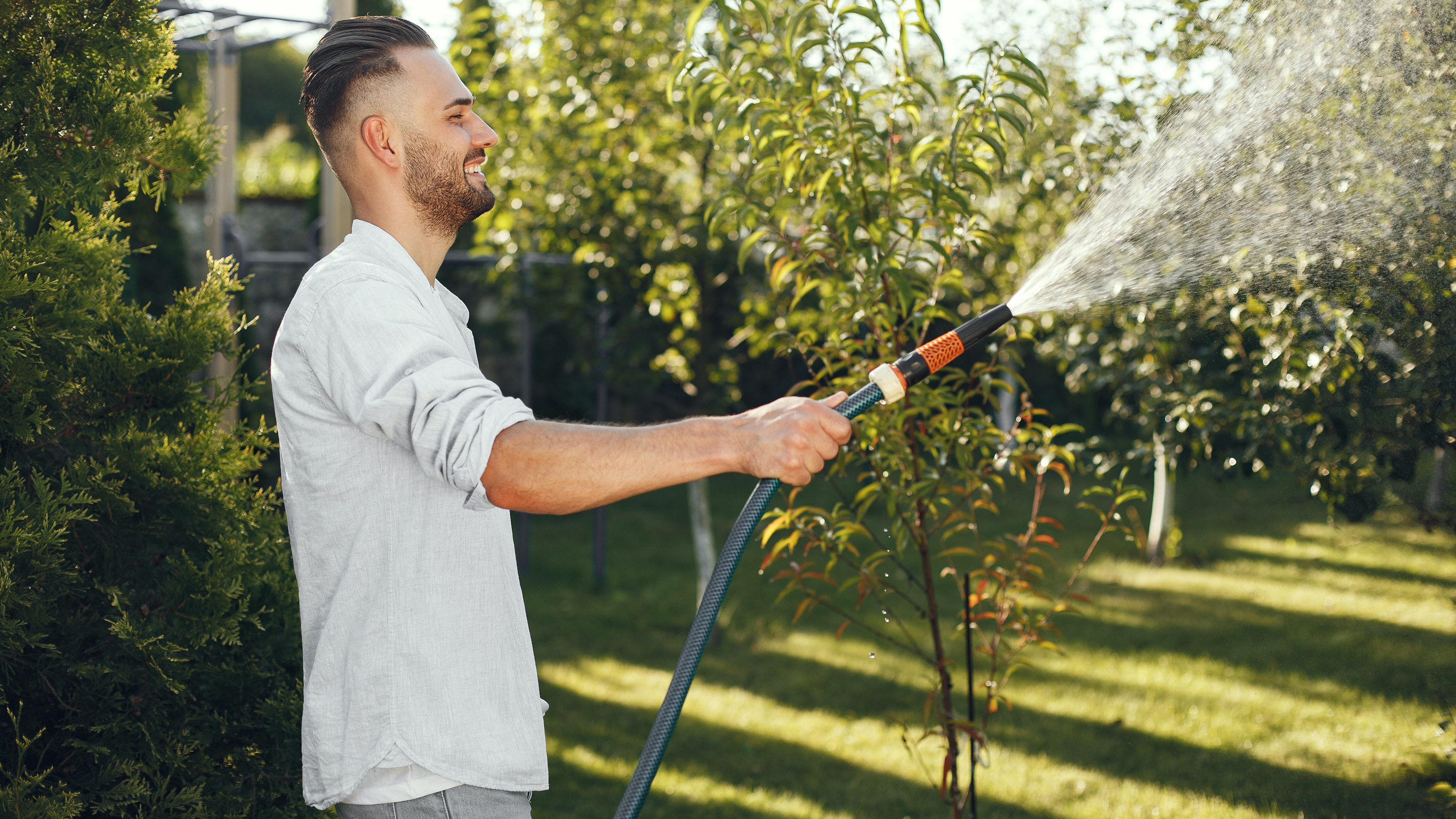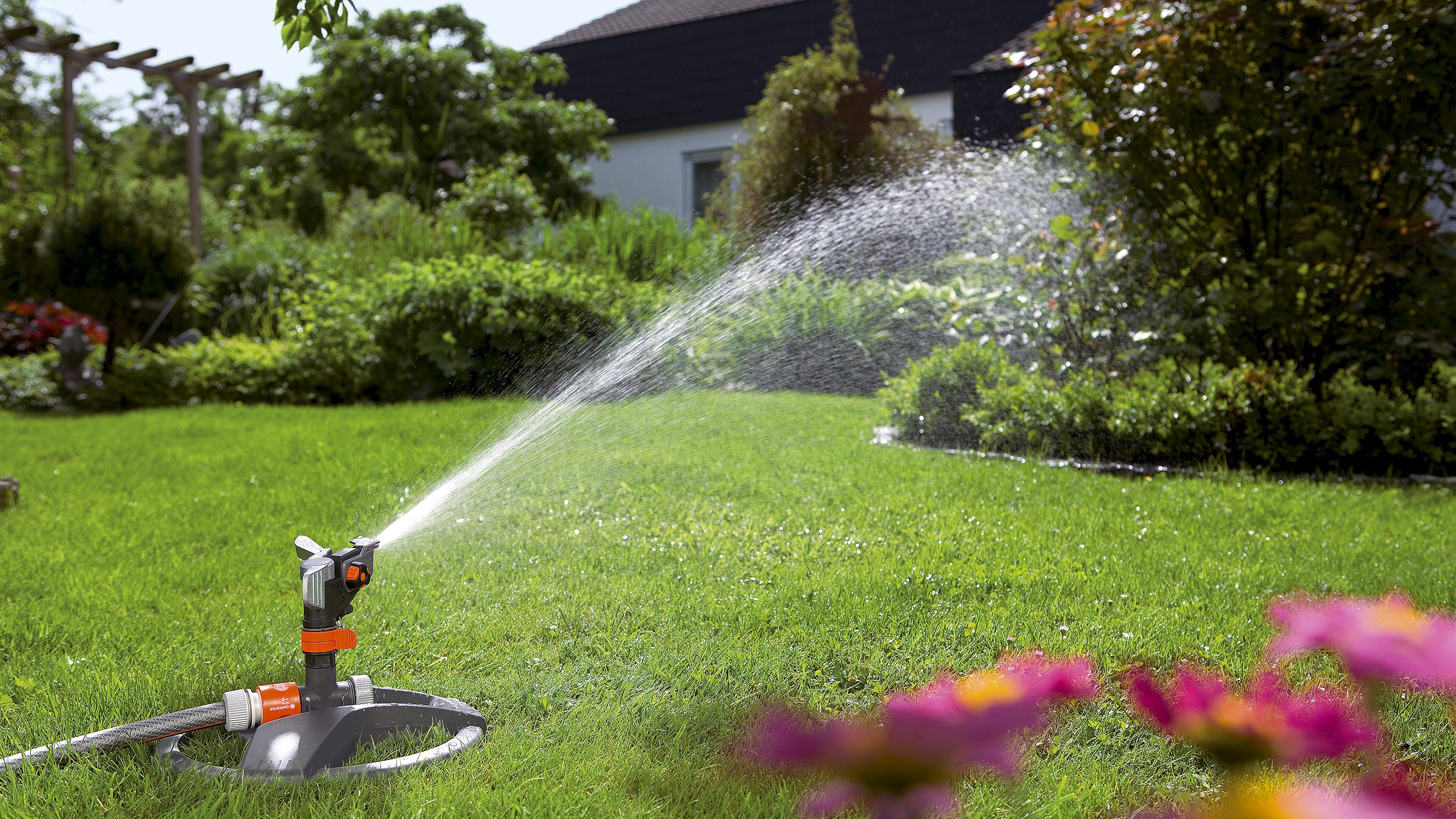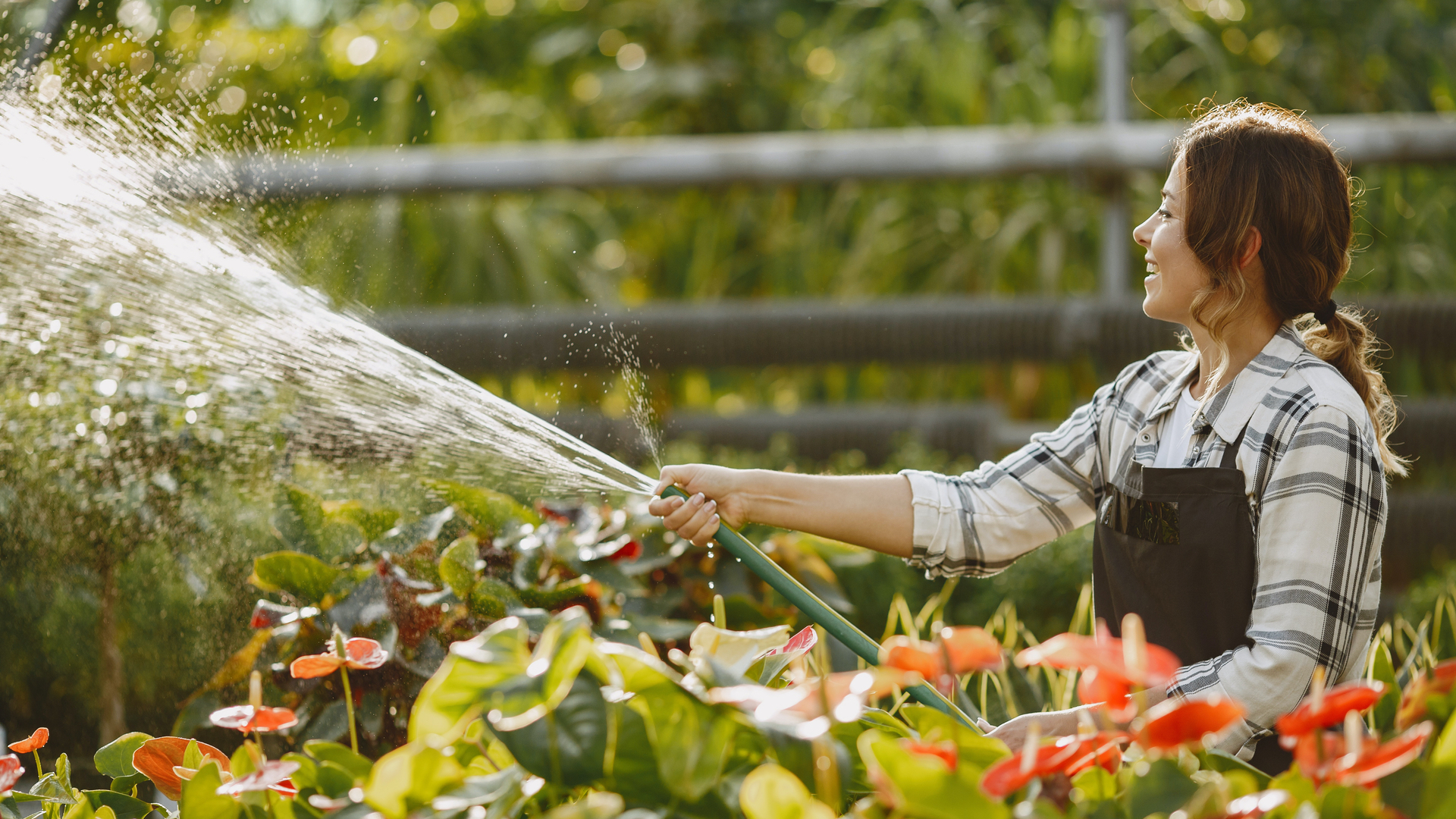5 mistakes everyone makes when watering their garden
Water your garden like a champion, not a chump


I, like I am sure many gardeners are doing right now, am working on my garden most days of the week. It's prime growing season for many plants and the grass on my lawns, with the sunnier, warmer, longer days powering a green wave of activity, and that means that my garden curation has to go into top gear.
But, with the warmer weather now here, and the rainiest months of the year now behind us, keeping plants optimally watered for healthy growth becomes a priority – and especially when heat waves are predicted to drop imminently!
However, warm weather means the re-surfacing of common garden watering mistakes that I see each and every year, with people frequently using their garden hose or garden sprinkler un-optimally. In fact, I often see seen plenty of manual watering can mistakes, too.
As such, right here I list 5 of the most common garden watering mistakes I tend to see so that, when you come to water your garden, you don't make them.

1. Watering your garden at the wrong time of day
Ok, if there is one mistake that I see people making more than any other then it is this one, and I guess you've seen it too.
The "oh crumbs, I haven't watered the garden for weeks, it's baking hot outside and the plants and grass look parched! Quick, I better run out and water it right now" moment, where the amateur gardener then proceeds to turn on their sprinkler or grab the watering can at 1:37pm.
The result? Most of the water dispensed on the plants or lawn immediately evaporates before it can seep into the soil and hardly any of it gets absorbed by the plants' roots, rendering the whole process basically useless.
Get all the latest news, reviews, deals and buying guides on gorgeous tech, home and active products from the T3 experts
To be clear, never ever water plants and gardens in the heat of the day. The optimal watering times are first thing in the morning and later on in the evening, where it is cool enough for the dispensed water to seep down into the soil and be absorbed.
Many of the best garden watering systems come with timing mechanisms built in, either analogue or digital, and can be programmed to come on a specific times, helping optimal watering times to be hit without the gardener even having to get out of bed.

2. Watering plants and grass too much
This is the second biggest schoolboy mistake I see amateur gardeners make. And I get why it happens, as when every child is taught about plant growth at school they get told that sun and water are the two things every plant needs to be healthy.
This then translates into new, eager gardeners overwatering their garden, fretting that if their newly planted hostas don't get a metric ton of water every 6 hours then they're going to die.
But the truth is that watering too much is a sure fire way to arrest growth and, worse, actually kill the plants or grasses you're looking to help dead.
When plants get too much water you expose them to numerous problems including root rot and root de-oxygenation caused by soil compaction. Fungal problems also stem from overwatering, too. Grass will suffocate and die within weeks if its soil becomes saturated and water-logged as well.
Watering plants too much can also make it reliant on the manual watering, which then will arrest deep root growth. This means that if you stop watering at the same level, the plant won't have naturally grown the tools it needs to survive and flourish.
Yes, the amount of water a plant needs varies depending on type, soil type, environment, climate and more, so do your research, but as a general rule I always say to new gardeners they should fight against feelings of hyper-frequent watering as their plants are almost certainly fine without it.

3. Watering inconsistently
This mistake is also very common and tied to both of the previous points. To win when watering your garden you want to be consistent in when you water and, unless conditions change dramatically, how much water you use.
If you look at most garden centres or professionally tended gardens they are watered at very precise times. That may not be every day but they are watered to a schedule – and this is good and promotes a natural, strong growth cycle.
What you absolutely don't want to do is heavily water your plants and / or lawn (maybe even to a level where they have been overwatered), and then ignore them for weeks or even months, saying to yourself "well, I gave them loads of water last time, that will sustain them through weeks of baking sun".
This is a bad way to think. You want to water plants, as a general rule, a modest amount at relatively frequent set times. This will help the plant without damaging it or making it reliant on a non-natural water source.

4. Using tap water instead of rain water
Honestly, this is a super cheap (if not free) way to not only cut your water bill but also be more environmentally friendly. It's definitely a mistake not to harvest rain water in your garden and then use it to water your plants.
Outdoors water containers are really cheap (and you can even just leave regular buckets you already own out with a few stones in their base to keep them stable from winds) and they are a great way to harvest rain water, either falling directly into them or being fed into them from your home's guttering.
You'd be amazed at just how much water you can collect after a few good showers, and after a day you'll likely have some left over. I tend to use collected water like this in watering cans for manual watering, leaving the mains tap for sprinklers and hose work.

5. Watering plant tops and not their bases
Lastly, a simple mistake but one I see people make a fair bit, is that they water the plant's leaves and flowers but not its base and the soil around it.
Remember, a plant absorbs the vast majority of its moisture (with contained nutrients) through its roots, not its leaves or body, so by sprinkling its top with water will likely massively reduce the effectiveness of your watering.
This is especially important with plants with large leaves that cover its immediate vicinity, as well as when the weather is hot, as water will evaporate of leaves in a blink of an eye in the heat of the day.
As such, be sure when watering that you water the base of plant, targeting the soil immediately around it. This will mean more of your water gets to the plant's roots.

Rob has been writing about computing, gaming, mobile, home entertainment technology, toys (specifically Lego and board games), smart home and more for over 15 years. As the editor of PC Gamer, and former Deputy Editor for T3.com, you can find Rob's work in magazines, bookazines and online, as well as on podcasts and videos, too. Outside of his work Rob is passionate about motorbikes, skiing/snowboarding and team sports, with football and cricket his two favourites.